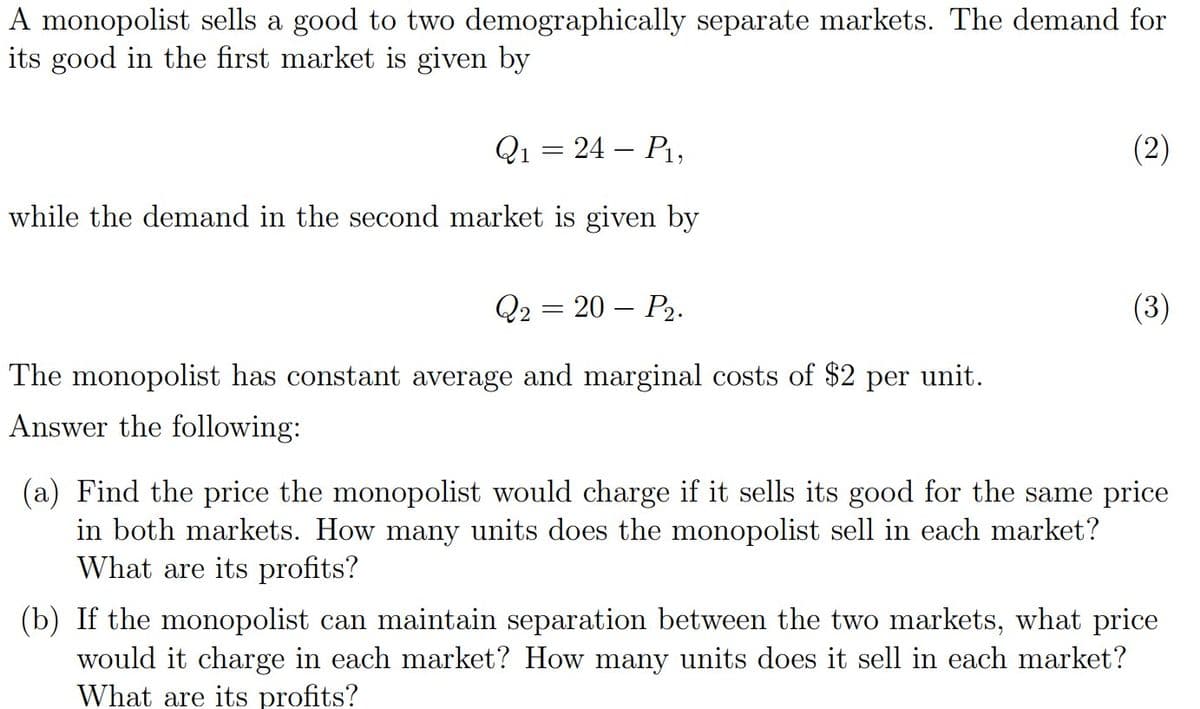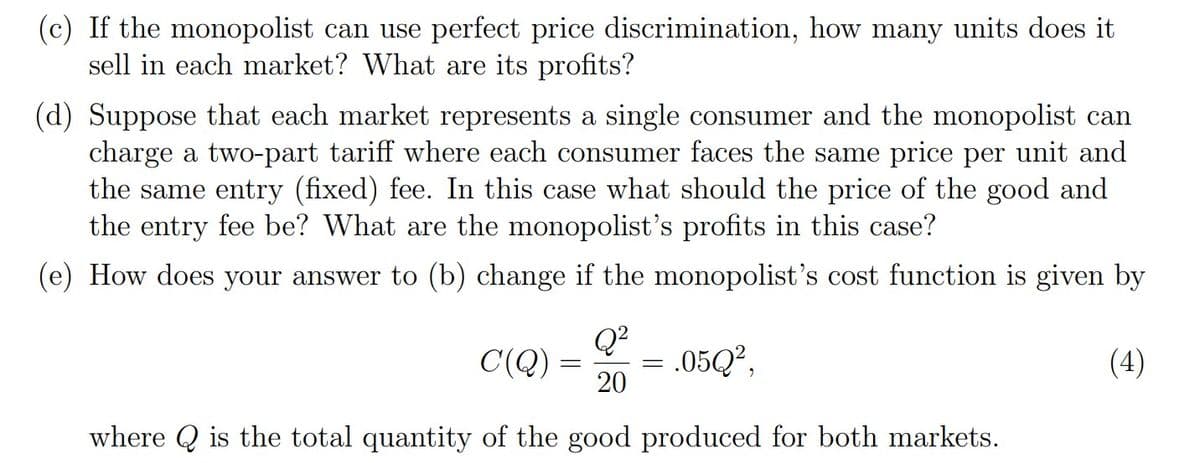A monopolist sells a good to two demographically separate markets. The demand for its good in the first market is given by Q1 = 24 – P1, (2) while the demand in the second market given by Q2 = 20 – P2. (3) The monopolist has constant average and marginal costs of $2 per unit. Answer the following: (a) Find the price the monopolist would charge if it sells its good for the same price in both markets. How many units does the monopolist sell in each market? What are its profits? (b) If the monopolist can maintain separation between the two markets, what price would it charge in each market? How many units does it sell in each market? What are its profits?
A monopolist sells a good to two demographically separate markets. The demand for its good in the first market is given by Q1 = 24 – P1, (2) while the demand in the second market given by Q2 = 20 – P2. (3) The monopolist has constant average and marginal costs of $2 per unit. Answer the following: (a) Find the price the monopolist would charge if it sells its good for the same price in both markets. How many units does the monopolist sell in each market? What are its profits? (b) If the monopolist can maintain separation between the two markets, what price would it charge in each market? How many units does it sell in each market? What are its profits?
Chapter14: Monopoly
Section: Chapter Questions
Problem 14.6P
Related questions
Question

Transcribed Image Text:A monopolist sells a good to two demographically separate markets. The demand for
its good in the first market is given by
Q1 = 24 – P1,
(2)
while the demand in the second market is given by
Q2 — 20 — Р2.
(3)
The monopolist has constant average and marginal costs of $2 per unit.
Answer the following:
(a) Find the price the monopolist would charge if it sells its good for the same price
in both markets. How many units does the monopolist sell in each market?
What are its profits?
(b) If the monopolist can maintain separation between the two markets, what price
would it charge in each market? How many units does it sell in each market?
What are its profits?

Transcribed Image Text:(c) If the monopolist can use perfect price discrimination, how many units does it
sell in each market? What are its profits?
(d) Suppose that each market represents a single consumer and the monopolist can
charge a two-part tariff where each consumer faces the same price per unit and
the same entry (fixed) fee. In this case what should the price of the good and
the entry fee be? What are the monopolist's profits in this case?
(e) How does your answer to (b) change if the monopolist's cost function is given by
Q?
= .05Q?,
20
C(Q) =
(4)
where Q is the total quantity of the good produced for both markets.
Expert Solution
This question has been solved!
Explore an expertly crafted, step-by-step solution for a thorough understanding of key concepts.
This is a popular solution!
Trending now
This is a popular solution!
Step by step
Solved in 5 steps with 4 images

Knowledge Booster
Learn more about
Need a deep-dive on the concept behind this application? Look no further. Learn more about this topic, economics and related others by exploring similar questions and additional content below.Recommended textbooks for you








Managerial Economics: Applications, Strategies an…
Economics
ISBN:
9781305506381
Author:
James R. McGuigan, R. Charles Moyer, Frederick H.deB. Harris
Publisher:
Cengage Learning

Microeconomics: Principles & Policy
Economics
ISBN:
9781337794992
Author:
William J. Baumol, Alan S. Blinder, John L. Solow
Publisher:
Cengage Learning